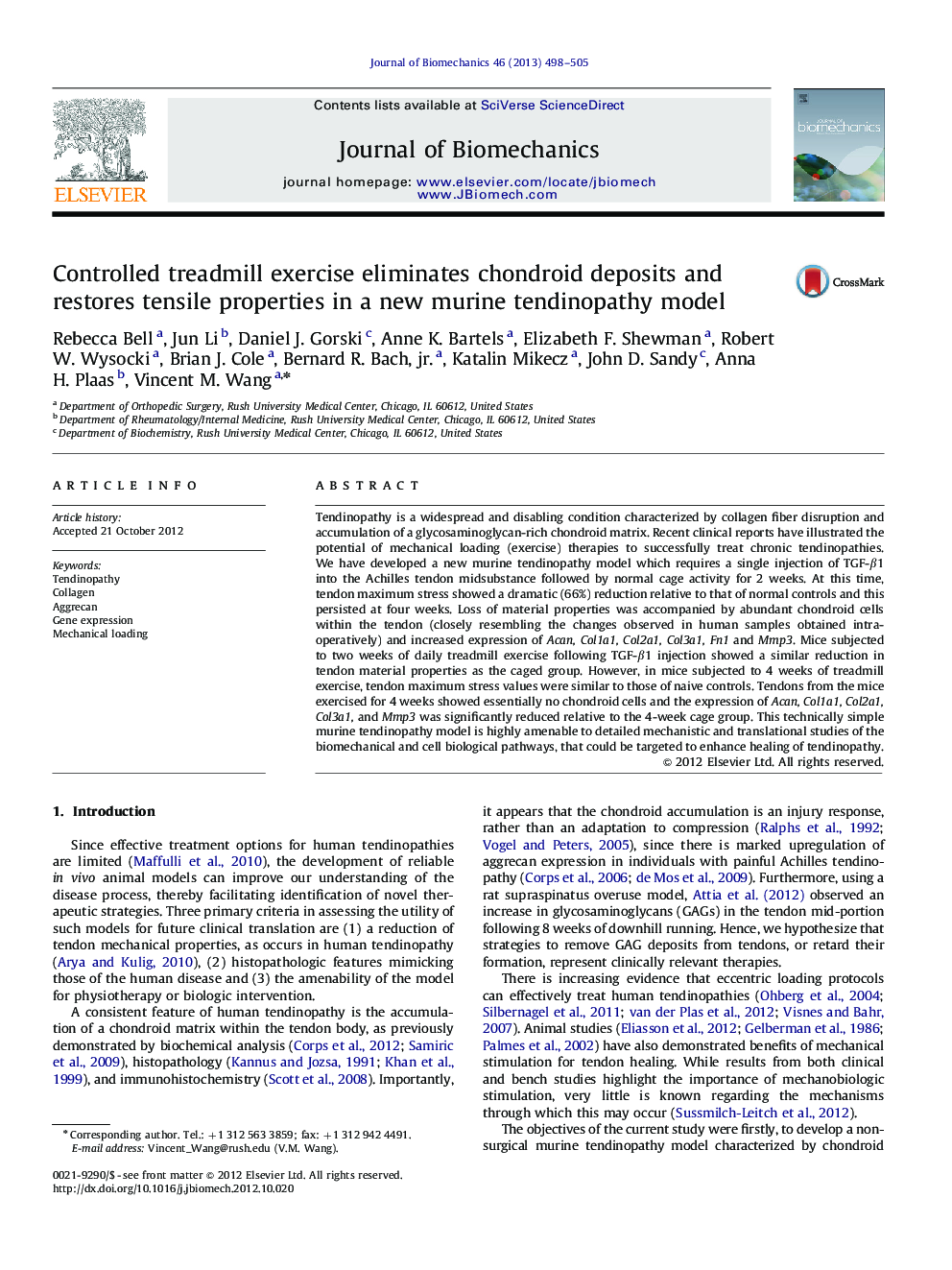| Article ID | Journal | Published Year | Pages | File Type |
|---|---|---|---|---|
| 10431962 | Journal of Biomechanics | 2013 | 8 Pages |
Abstract
Tendinopathy is a widespread and disabling condition characterized by collagen fiber disruption and accumulation of a glycosaminoglycan-rich chondroid matrix. Recent clinical reports have illustrated the potential of mechanical loading (exercise) therapies to successfully treat chronic tendinopathies. We have developed a new murine tendinopathy model which requires a single injection of TGF-β1 into the Achilles tendon midsubstance followed by normal cage activity for 2 weeks. At this time, tendon maximum stress showed a dramatic (66%) reduction relative to that of normal controls and this persisted at four weeks. Loss of material properties was accompanied by abundant chondroid cells within the tendon (closely resembling the changes observed in human samples obtained intra-operatively) and increased expression of Acan, Col1a1, Col2a1, Col3a1, Fn1 and Mmp3. Mice subjected to two weeks of daily treadmill exercise following TGF-β1 injection showed a similar reduction in tendon material properties as the caged group. However, in mice subjected to 4 weeks of treadmill exercise, tendon maximum stress values were similar to those of naive controls. Tendons from the mice exercised for 4 weeks showed essentially no chondroid cells and the expression of Acan, Col1a1, Col2a1, Col3a1, and Mmp3 was significantly reduced relative to the 4-week cage group. This technically simple murine tendinopathy model is highly amenable to detailed mechanistic and translational studies of the biomechanical and cell biological pathways, that could be targeted to enhance healing of tendinopathy.
Related Topics
Physical Sciences and Engineering
Engineering
Biomedical Engineering
Authors
Rebecca Bell, Jun Li, Daniel J. Gorski, Anne K. Bartels, Elizabeth F. Shewman, Robert W. Wysocki, Brian J. Cole, Bernard R. Bach, jr., Katalin Mikecz, John D. Sandy, Anna H. Plaas, Vincent M. Wang,
